THE $5 BILLION BATTLE FOR
THE AMERICAN DINNER PLATE
THE $5 BILLION BATTLE FOR
THE AMERICAN DINNER PLATE
THE $5 BILLION BATTLE FOR
THE AMERICAN DINNER PLATE
Investors in startups like Blue Apron, HelloFresh, and Plated are wagering hundreds of millions of dollars on the idea that dinnertime is just too hard to manage. As meal-kit startups spring up like so many mushrooms, Fast Company investigates the boxed-meal phenomenon and how it will change the way we eat.
My relationship with my kitchen is, well, complicated.
As a millennial, I came of age in the era of the farmer’s market, so I have a deep appreciation for a nice locally sourced carrot or a slightly imperfect organic pear. I dutifully read Mark Bittman’s columns and Michael Pollan’s books, so I am well aware that I will live a sad, sub-par, probably bloated life if I refuse to eat at home and choose, instead, to consume the processed junk peddled by America’s industrial food complex. I admit to occasionally binge-watching MasterChef.
But this love of food hasn’t translated into a love of cooking. My mother is a fantastic cook, but she worked full time and in the rush to get dinner on the table by 7, she often relied on semi-prepared foods, like pre-marinated meats or curry mixes. From where I sat, cooking seemed like a drag, something that took time and effort in the midst of an already overcrowded schedule. To quote Krishnendu Ray, the chair of the food studies program at New York University: "Caregiving comes at a cost. Whenever there is a labor of love, there is also a labor of resentment."
When I moved into my first apartment years later, my stovetop seemed foreign and intimidating. At one point during graduate school, in a particularly tiny Bay Area apartment, I used my oven as a filing cabinet.
Now, at age 32, after three years of marriage, my husband and I find ourselves wanting to sit down to a nice home-cooked dinner at the end of the day. But we’re too busy and too inexperienced in the kitchen to make that happen. We eat out a lot, often hitting up Chipotle or our local Vietnamese place on the way home from work, behavior fairly typical of our demographic. Millennials spend more on food outside the home than any other generation, averaging $50.75 a week. As the two of us consider starting a family, we worry about how our culinary ineptitude will impact our future children. We are beginning to wonder whether we even have what it takes to put a proper, nutritious dinner on the table for our little ones.

Enter the meal kit, our partial solution to getting ourselves fed healthily. Every Sunday, we receive a box full of individually wrapped and labeled ingredients for five dinners complete with detailed—and, fortunately for me, idiot-proof—recipes. Just Add Cooking, the service we use, exclusively serves the Boston area and uses largely local produce; it saves us time planning meals and shopping for groceries, an especially gruesome task during winters in Cambridge, Massachusetts. While we do not have much choice over the meals we receive, our box is slowly helping us to acclimate to our kitchen (for purposes other than document storage, that is). Although my mother laments that we are paying far more for each meal than she ever spent on groceries for our family, we’ve calculated that we spend slightly less than we would if we were eating out for those meals.
And I'm hardly alone. Technomic, a food-industry consulting firm, predicts that the meal-kit service segment of the market will grow to between $3 billion-$5 billion over the next 10 years based on current adoption rates. People like me are the reason venture capitalists are fire-hosing money at the space in a fairly spectacular fashion: Since boxed-meal startups Blue Apron and Plated launched in 2012, they have raised $58 million and $21.6 million, respectively; the Wall Street Journal recently reported that Blue Apron is in talks to raise a huge new round from investors that would value the company at $2 billion. And HelloFresh, a European meal-kit company founded in 2011 and backed by notoriously competitive startup copycat Rocket Internet, justclosed $126 million in Series E funding with the goal of making incursions in the U.S. market. Blue Apron delivers more than two million meals a month, and HelloFreshclaims it's already doing twice that volume.
U.S. consumers have a plethora of other meal kits to choose from, each with a slightly different gimmick: ChefDay offers step-by-step videos so you can cook along with chefs (though the company recently announced it would temporarily suspend deliveries for a "crucial phase of transition"); Din cuts up some of the ingredients for you; Peach Dish brings you Southern-inspired cuisine, and smaller, regional companies are popping up around the country like so many shiitake mushrooms.
With all these companies duking it out for the boxed-meal consumer, the question remains: Just how many are there of us to go around, anyway?
Given that restaurants and grocery stores sell $1.2 trillion of food every year, even in the most optimistic scenario meal kits currently constitute one quarter of one percent of food sales—and some think they will remain an extremely specialized solution for a sliver of the population. "I have a hard time believing that this is the way we will eat every single day," says Darren Seifer, food and beverage analyst at the consumer research company NPD Group. "This is a very niche option that is barely even showing up in the data."
Brian Todd, president of the food intelligence nonprofitThe Food Institute, says that even if the boxed-meal industry does hit the $5 billion mark, it's still, relatively, peanuts. "It’s important to keep the numbers in perspective," he says. "Even if meal kits grow to that level—which strikes me as extremely rapid growth in one category—it’s such a small portion of the overall food business."
Some food scholars are skeptical as well. "I'm betting that much of this hype is investor-led," says Nina Ichikawa, the policy director at the Berkeley Food Institute. "Basic everyday food is not as profitable as luxury take-out. Investors are excited that there's now a higher-margin item on the horizon. But that doesn't mean there will be an avalanche of customers. I certainly can't afford this stuff."
But investors are betting big that the naysayers are wrong. They are wagering hundreds of millions of dollars that these companies can triumph, in part, by playing on Americans' nostalgic ideas about home and hearth—even if it means higher price tags, packaging waste, and convincing a generation to overcome any qualms it may have about this new way of putting dinner together.
The meal kit is a relatively recent innovation. It was born in Stockholm, Sweden, whenKicki Theander, a mother of three, observed that many families wanted to eat home-cooked dinners but struggled to manage the logistics of meal planning, purchasing, and cooking. In 2007, she launched Middagsfrid (roughly translated: "dinner time bliss"), a service that brought bags of groceries to people’s doors. It was an instant hit. Theander’s brand quickly spread to Denmark, Germany, Belgium, and Switzerland, and spawned a range of competing companies. At least 10 different meal-kit companies now operate in Sweden alone, and the country's population is under 10 million people.
In the U.S., boxed-meal services were initially adopted by millennial urbanites. "These are people with more expendable income who are looking for convenience and perhaps do not know how to cook on their own," Todd says. Plated, Blue Apron, and HelloFresh are all headquartered in New York and although they are available nationwide, they tend to do particularly well in cities like New York and San Francisco where grocery shopping can be a challenge because many people don’t have cars. "Our customers are primarily living in and around major metro areas," Nick Taranto, Plated’s co-CEO and cofounder tells Fast Company. "They are largely college-educated, dual-income families with no kids."
Nicole Marshall, a marketing professional in her early thirties, first started using Blue Apron when she was living in New York City, but found it less appealing when she moved to Denver. "The idea of cooking at home in New York is a pain because you’re hauling groceries all over town," she says. "But in Denver, I pass by three grocery stores on the drive home from work, and there’s a thriving farmer’s market scene on the weekends. None of my colleagues here had ever heard of these boxes."
Big-city dwellers are also used to spending a lot of money on food, since the cost of living tends to be high where they live. This is another reason they might be more amenable to boxed meals, which are an expensive proposition. Taranto says that his target demographic is what he describes as the "evolved eater," which is, according to Plated's proprietary research, a 31 million strong segment of the American population that cares deeply about the quality of their food and has enough disposable income to invest in eating well. Taranto says that while $12 a meal is a costly dinnertime time option for many, it is a reasonable expense to a segment of consumers whose alternative options include eating out, either at fast casual chains like Panera Bread or at fine dining establishments, or buying groceries from upmarket grocery stores like Whole Foods. "We’ve been very deliberate about going after the high end first," he says. "As our logistical network expands we will be able to deliver at lower price points to more and more people."
Of course, the urban, dual-income, no-kids demographic is a limited and fleeting one—when my husband and I have kids and a mortgage, for instance, will our weekly box still seem like a worthwhile expense? Will boeuf bourguignon and seafood paella go down well with the toddler set?

This is something the boxed-meal companies are thinking about, too. In December 2014, Blue Apron announced it was offering a Family Planthat would feature kid-friendly dishes designed to serve four people at a cost of $8.74 a person, or $34.96 per meal. In its press release, it announced that this new product would allow it to start "doubling its addressable market." Given that the average American family spends $151 on groceries for the whole week, or $21 for an entire day, Blue Apron’s program is over many families’ budgets. Still, Matt Salzberg, Blue Apron’s founder and CEO, says that the family plan has quickly become a sizable proportion of the company’s overall business, although he declined to provide hard numbers. He also insists that the box offers customers good value. "It’s very affordable," he tells me. "Try to go shopping for our recipes at Whole Foods or at any other grocery store. Besides not being able to find many of the ingredients, it would cost you 60% more." (This may well be true, but the products at a supermarket would almost certainly come in larger sizes and could be used for multiple meals, and one could shop for recipes requiring simpler and more affordable ingredients.)
For some upper-middle-class families who are already shopping at premium grocery stores like Whole Foods or eating out a lot, though, meal boxes are a viable option. Take Stella Loven, a working mom in Cambridge, Massachusetts. Her job as the president of the Swedish American Chamber of Commerce in New England keeps her days full, but when she comes home, she wants to create nutritious meals for her four-year-old daughter and six-year-old son. "The pressure is on: you want to be a good mom, you want to lose the baby weight, you want to be a good wife, all while being super fun. It’s just very hard," she tells me. "Sometimes I wish I hadn’t read all those books about what processed food does for your body: It just adds more anxiety when I come home and need to prepare dinner for my kids."
Loven’s stresses are fairly typical: according to the latest data from the Bureau of Labor Statistics, working women spend more than twice as long as working men cooking meals and cleaning up afterwards. Loven's weekly meal box cuts down on time spent meal planning and grocery shopping, although there's still the prep time of 30 minutes, give or take 15 minutes, a meal. She tried Blue Apron for a while and eventually settled on Just Add Cooking. Every week, she spends $139 for five four-person dinners, which translates to $6.95 per person per meal, or $27.80 for each dinner. Jan Leife, Just Add Cooking’s co-founder and managing partner, says that family boxes represent 60% of the company’s sales.
As boxed-meal companies grapple each other for control of the American dinner plate, it is worth asking just how, exactly, they may be changing our relationship with food. After all, food is not just about nutrition: it is also about culture, community, family traditions. My conversations with the founders of meal-kit companies demonstrate these companies are not just thinking about the practical needs of their clients, but also the emotion tied to preparing food and gathering around the table to eat it. While Americans may feel nostalgic for the romance of the family dinner depicted in Norman Rockwell paintings, many don't feel equipped to cook due to lack of time or skill.
"Part of why this is such a big idea is because we’re connecting our aspiration to cook and share food to the reality of a busy modern life," says Taranto of Plated. "We have this primal desire to eat food together. But a lot of people in our parents' generation did not learn how to cook, so many of us did not have the opportunity to learn from them. In some ways, the family dinner stopped with our grandparents."
"Part of why this is such a big idea is because we’re connecting our aspiration to cook and share food to the reality of a busy modern life," says Taranto of Plated. "We have this primal desire to eat food together. But a lot of people in our parents' generation did not learn how to cook, so many of us did not have the opportunity to learn from them. In some ways, the family dinner stopped with our grandparents."
Taranto is pointing to a shift that has been gradually happening over the last 50 years, as more women started working outside the home and corporations began churning out TV dinners, fast food, and easy takeout options—we're looking at you, Seamless—reducing the labor required to put food on the table. Blue Apron, for its part, says it is explicitly committed to the idea of culinary education. "Chefs around the world wear blue aprons when they are learning to cook and for us, it’s a symbol of lifelong learning in cooking," says founder Salzberg.
Of course, this depends to an extent on how you define "cooking." Is selecting or thinking about the dishes you want to make for your family, and then choosing the right cut of meat or the best seasonal vegetables an integral part of the process? Or is the act of combining ingredients that someone else has chosen, measured, possibly chopped, and packaged, to create recipes they have curated for you, enough? It is a subtle distinction, but one that suddenly became clear to me when I started cooking dinners straight out of a box.
Last month, I was preparing the next meal in our kit, a vegetarian dish of shredded carrot patties with a side of mashed potato, celery, and leek. After 40 minutes of peeling vegetables and pureeing them in our barely-used industrial-sized Kitchenaid mixer (a wedding present from Aunt Jewell), I was proud of my accomplishment. I plated the food with all the earnestness of a MasterChef contestant, artfully sprinkling sesame seeds here and sprigs of fresh tarragon there. The food tasted great. My husband was impressed, but existential questions nagged me as I considered the plate: "Did I really cook this? Or did I just assemble it? Would I be able to replicate that meal without the help of the meal kit? Can you credibly claim to be a good cook if you cannot locate ingredients in a grocery store or know how to combine them on your own?" I was not particularly good company that evening.
This is not the first time that corporations have toyed with the meaning of cooking. In the 1950s, cake-mix companies, following a slump in sales, believed that American women did not feel like they were cooking if they simply added water to the cake powder. Marketers were convinced that changing the mix formula to require users to add an egg gave them a sense of ownership over the cake they had made. While the boxed meal requires more involvement than Betty Crocker did with her Devil’s Food, these companies are still cutting out parts of the cooking process that many would argue are integral to idea of actually learning to cook.

What is lost when families are not involved in selecting the dishes they cook? For one thing, it means that they are not sharing food drawn from their own store of recipes, their heritage, or even regional specialties. I was born to an Indian father and a Chinese mother, but spent my childhood around the world because of my father’s job in the airline industry. The only time I really felt connected to my culture was at dinner every night, eating rice with chicken curry, fried noodles, vegetables in soy sauce, or coconut chutney with dosa (a kind of Indian crepe). My husband, for his part, felt a link to his Jewish heritage when he was eating his grandmother’s matzo ball soup, brisket, or Saturday-morning bagels and lox. If the two of us don’t move past the meal kits, there is a distinct possibility that many of our family’s food traditions will end with us and instead will be decided by a well-meaning executive chef in an industrial kitchen.
Krishnendu Ray, of NYU's food studies program, points out that this transmission of food culture has been shifting slowly over the last century. "Knowledge about food was once conveyed in close proximity from mother to daughter or grandmother to grandchild," he says. "Now we have to learn this from a company or the mass media. But we shouldn’t over-sentimentalize the past: American women have been learning about food from companies since the industrial revolution. For two generations, women have been learning recipes from the back of food packaging—think about the popularity of Jell-O molds or chocolate pound cake." So I’m mourning a loss of culture and tradition that has already begun eroding.
The meal-kit industry is only just beginning to consider the cultural or regional resonance of food. The big national brands like Plated, Blue Apron, and HelloFresh offer menus with a global bent, providing customers an educational experience in which they can discover new cuisines, unfamiliar spices, and new cooking techniques. However, a range of smaller brands have recently entered the scene offering a regionally specific cooking experience. Peach Dish, which ships nationally, offers "Southern-infused" recipes. And Boston-based Just Add Cooking’s entire goal is to keep things local, rather than expanding nationally, which its founders believe will also help to preserve regional cuisine. "There is a definite connection between local ingredients and local recipes," says Jan Leife of Just Add Cooking. "It’s something we try to leverage in our meal boxes."
Leife is also wedded to the local model because he believes it is more environmentally sound; shipping nationally requires food to be kept chilled and packaged to avoid damage. When Just Add Cooking expands to a new region, Leife will set up a new hub in order to keep sourcing and menu planning local. "The big companies are very smart, of course, by grabbing land and expanding," Leife says. "But in the long run, our model is definitely more sustainable and environmentally friendly. We’ve found that there is a market for our product among people who care about the waste involved."
And that's another hurdle all boxed-meal companies must consider: waste, and consumer perception of it, a complicated but nonetheless crucial issue for meal kits as they try to take market share from grocery stores. Since the vast majority of meal-kit companies are not local, they face the complex supply chain logistics of transporting food from farms and manufacturing plants to locations across the country, while keeping everything at the right temperature. This is a hugely energy intensive process. Meal kits use large quantities of packaging to contain small amounts of spices or cheese or balsamic vinegar.
This is something that Plated's Taranto constantly wrestles with; his goal is to make the company 100% carbon neutral. As a step in that direction, Plated began shipping meals out using packaging made of jute, a recycled and renewable plant based fiber, starting June 1. But Taranto admits that being environmentally sustainable is an ongoing struggle. "The challenge is that customers want perfect-looking ingredients with no packaging," he says. "This is, unfortunately, not realistic."
Marshall, the Denver-based marketing professional, tells me that she ultimately abandoned the boxed meal-kit concept entirely because of the sheer amount of waste she was accumulating. "I did not sleep well at night with the amount of garbage that was going out of my door every week when I was using Blue Apron," she says. "It was the ice packs that really put me over the edge: there are massive amounts of them in the box, because it is delivered during the workday and you might not get to it for 8 to 10 hours, and there are no instructions about how to recycle them."
She admits that it is hard to make a direct comparison with grocery shopping, which involves waste of other kinds. For instance, grocery stores waste vast quantities of perishable produce because they are unable to precisely predict demand. The USDA estimates that 31% of food in grocery stores goes uneaten every year, resulting in a loss of $161.6 billion; France justmade it illegal for supermarkets to throw away edible food in an effort to reduce waste on this epic scale. Meal kits, on the other hand, know exactly how many boxes they need to fill and are able to order precisely the amount of food they need. Taranto says that with predictive analytic technology, his company is able to keep food waste to under 2%. At home, consumers are also not wasting food, since they have exactly what they need for each recipe, down to the number of sprigs of mint or parsley, and each meal is exactly one serving—no more tossing the leftover mystery meat weeks after you initially stash it in Tupperware.
And ultimately, as Nina Ichikawa, Berkeley Food Institute's policy director, points out, this only accounts for a tiny sliver in overall food waste; it doesn't account for the food wasted by farmers who are unable to predict demand or the food that is damaged as it is transported. "By only participating in a very narrow slice of the food chain, you can perhaps say that you are avoiding waste," she says. "But by dipping in and out of it based on select consumer demands, that doesn't reduce overall waste in the system."

Marshall believes that boxed-meal services need to think carefully about how to become more sustainable because earth-conscious millennials are paying close attention to the waste they are generating. She argues there are other possible models these companies could adopt, such as giving consumers a starter kit with the main spices they will use so they don’t need to send little packets every week or picking up the previous week’s box to reuse the containers. "We live in an age where we take our own bags to the grocery store," she says. "These boxes do not coincide with that mentality at all." The rippling environmental impact of meal kits is going to take on increasing importance if these services do manage to gain a wider audience.
Despite these challenges, campaigns by well-funded boxed-meal companies to change the way we eat will have ripple effects—and not just on wealthy, urban, childless subscribers. For instance, they might push grocery stores to renew their emphasis on using technology to improve convenience and consumer experience. The Boston Consulting Group predicts that global online grocery shopping is expected to be a $100 billion business by 2018. "That’s not just the Amazons of the world," Todd of The Food Institute explains. "That’s actual grocery stores building up online ordering and delivery systems." With the popularity of meal kits, he predicts that grocery stores may start grouping products into meals, so that you can pick up a package of ingredients to make chicken parmesan or whatever you’re in the mood for. This is, in fact, already happening in Sweden, where grocery stores offer meal kits and deliveries designed to compete directly with Middagsfrid. "We’re just at the dawn of this industry," says Taranto.
In another twist of the concept, three graduate students at the University of California at Berkeley’s school of public health are thinking about a way to apply the principles of meal kits to help poor communities. Single working parents, of all people, could benefit from time saved on meal planning and shopping. They’ve launched a low-cost meal-kit service, Cooking Simplified, that requires families to spend only 1% of their week—about an hour and a half—to make three different dishes that are big enough for about half a week's meals (or, 10 servings), for $32. Each box contains only three recipes that are designed to result in leftovers that can be taken to work the next day. While the startup is still in its infancy, it offers a glimpse into the possibilities of developing less expensive options targeting a wider range of consumers.
Todd also suggests that people might stop using the boxed-meal kits once they have developed the skills they need to cook on their own terms. "People who didn’t learn to cook growing up, but have been using these meal kits for several months or years might begin to feel comfortable planning meals or buying ingredients," Todd says. If companies teach people to cook, they may find themselves losing those very customers. "Going to the grocery might suddenly become more interesting and they might look at the spice aisle in a new light. It might occur to them that it might be better value to buy a jar of bay leaves than to get one a week in their box," graduating from the boxes to a more traditional, old-fashioned approach to meal planning, grocery shopping, and cooking.
After several months of using our meal kit, our interest in it has started to wane. The meals are still tasty, but the novelty is wearing off and we sometimes have cravings for food that aren’t in our box. We occasionally skip weeks and dust off our cookbooks, picking recipes that strike our fancy then navigating our grocery store to hunt for cardamom or dill. I’m beginning to think we might be getting close to cooking like grown-ups, without training wheels.
But perhaps I’m being optimistic. The other day I tried to make leek soup, but accidentally used the wrong part of the vegetable, the tough, dark leaves. As my husband bravely tried to swallow the slimy green liquid I produced at the dinner table, I found myself thinking: "This would never have happened with our box kit."
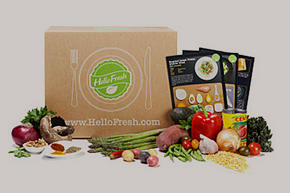
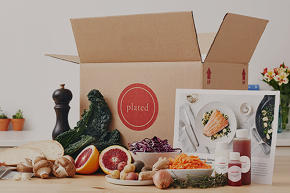

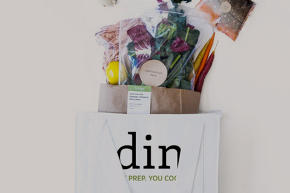
No comments:
Post a Comment